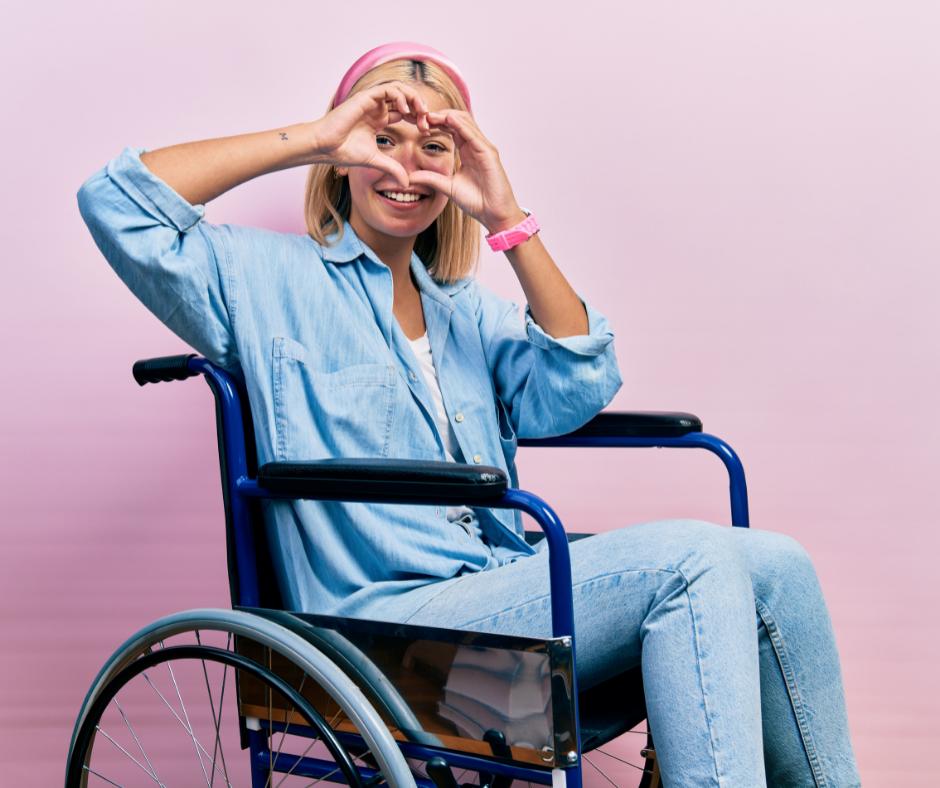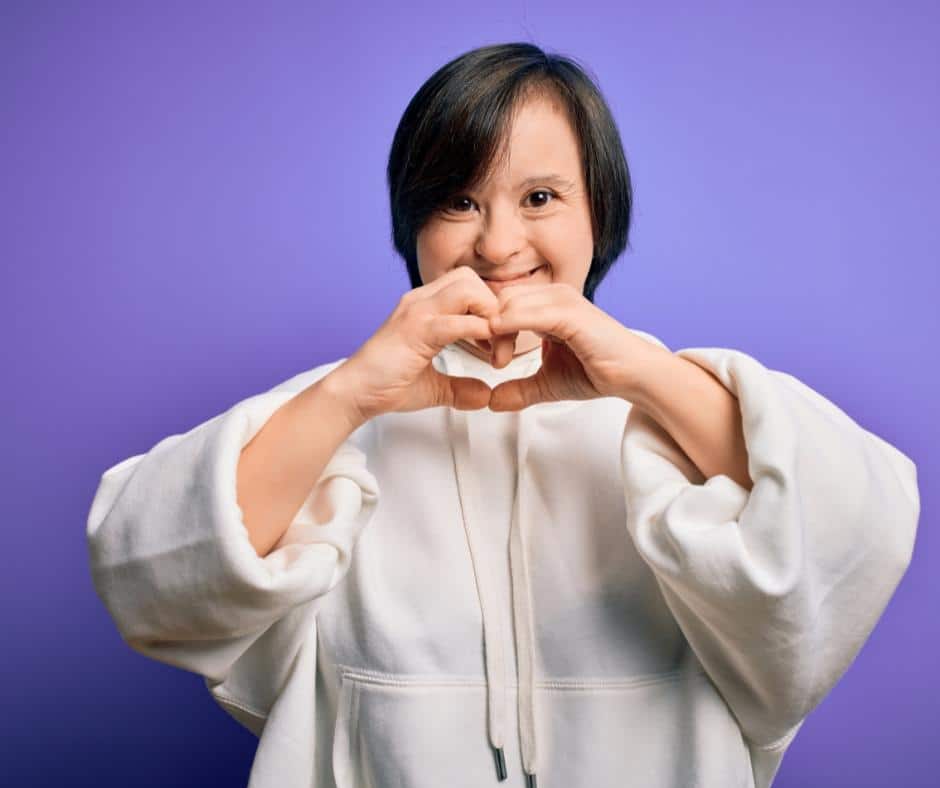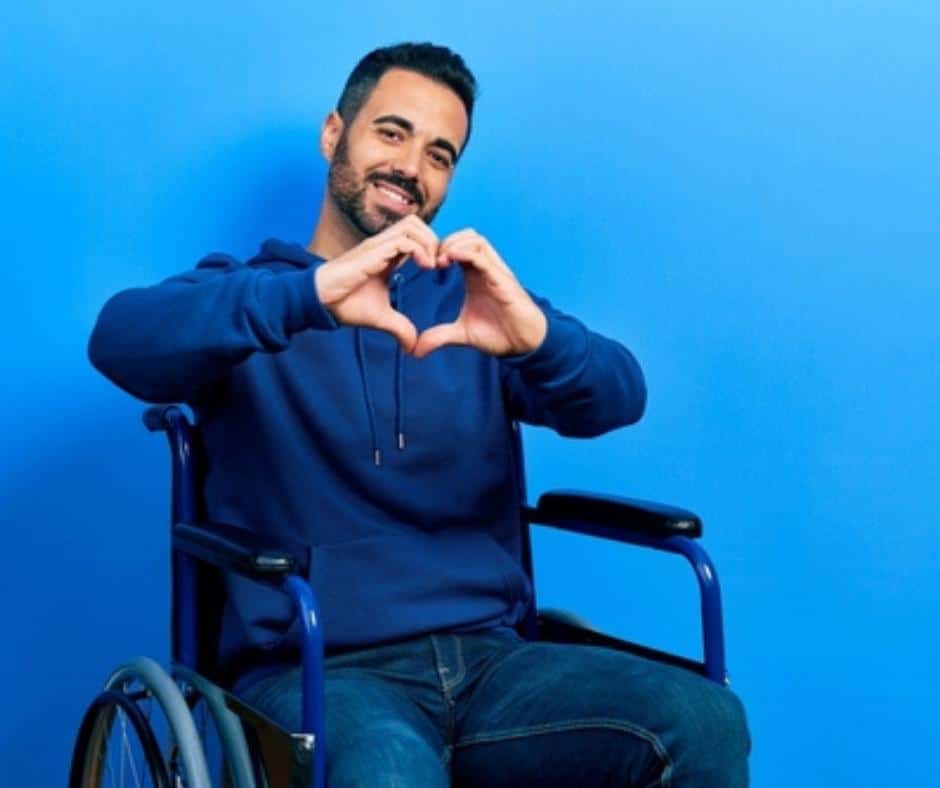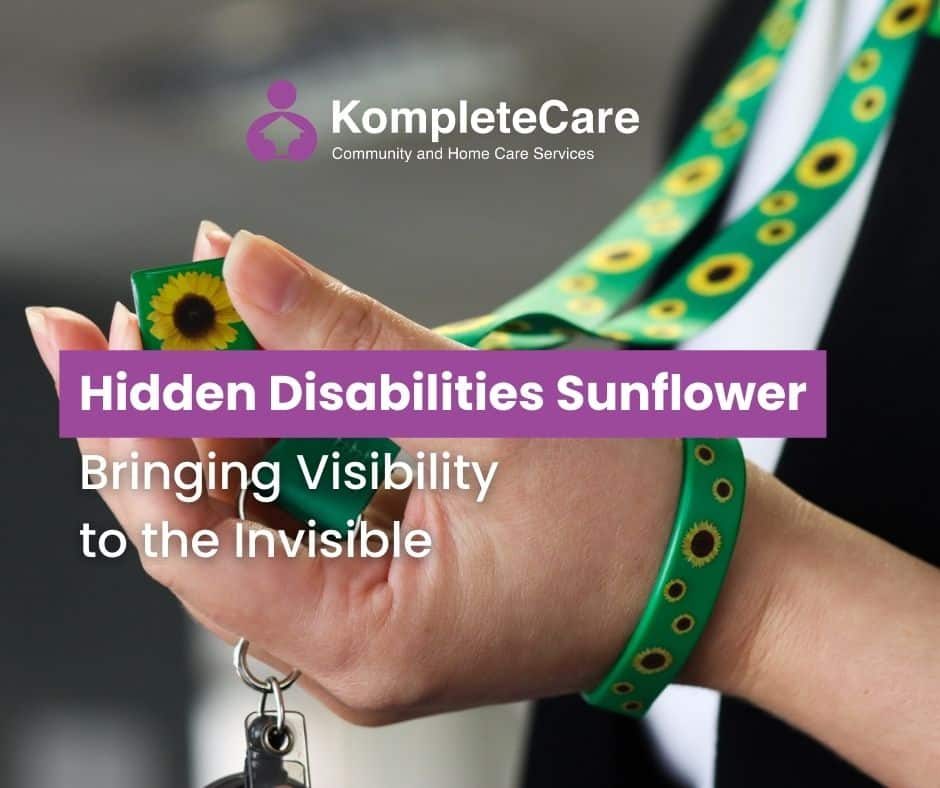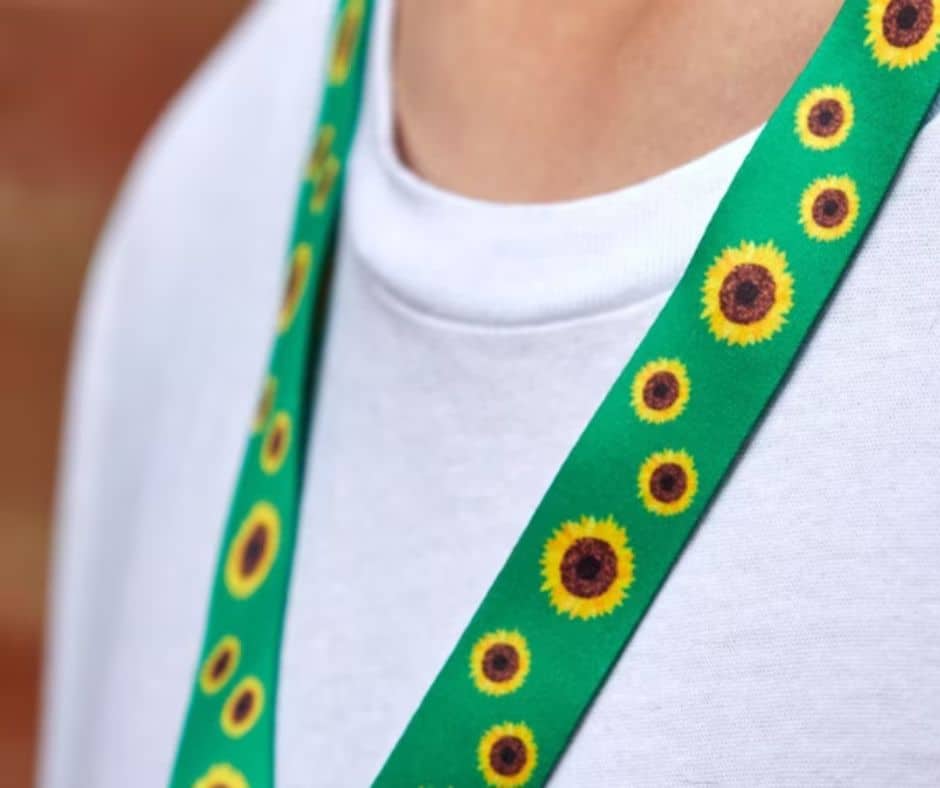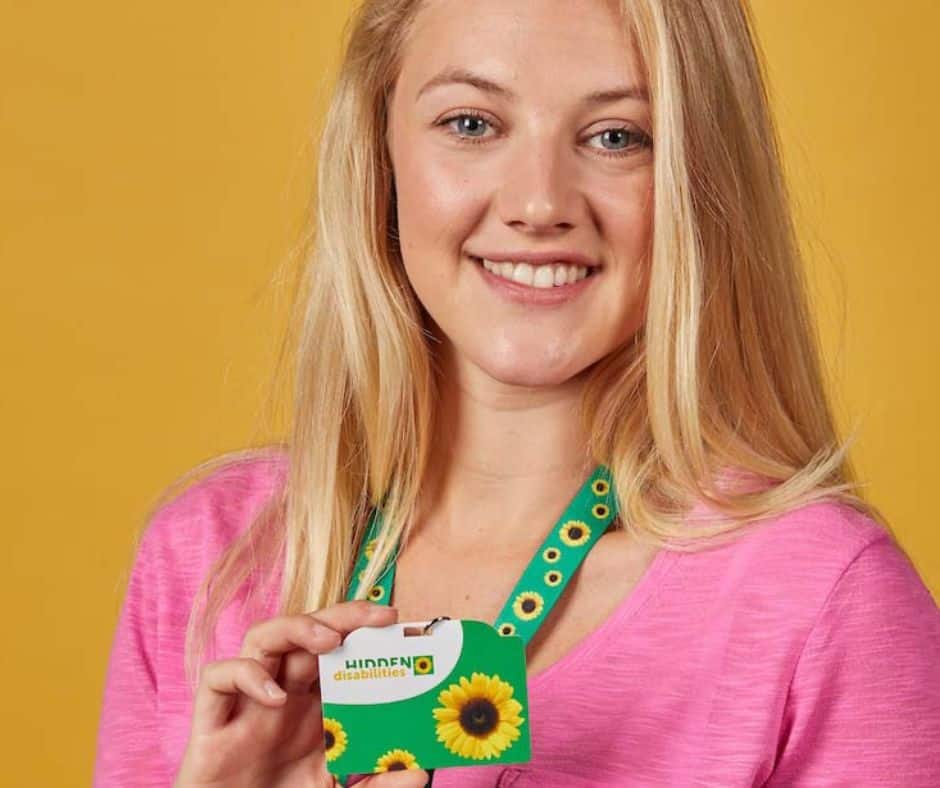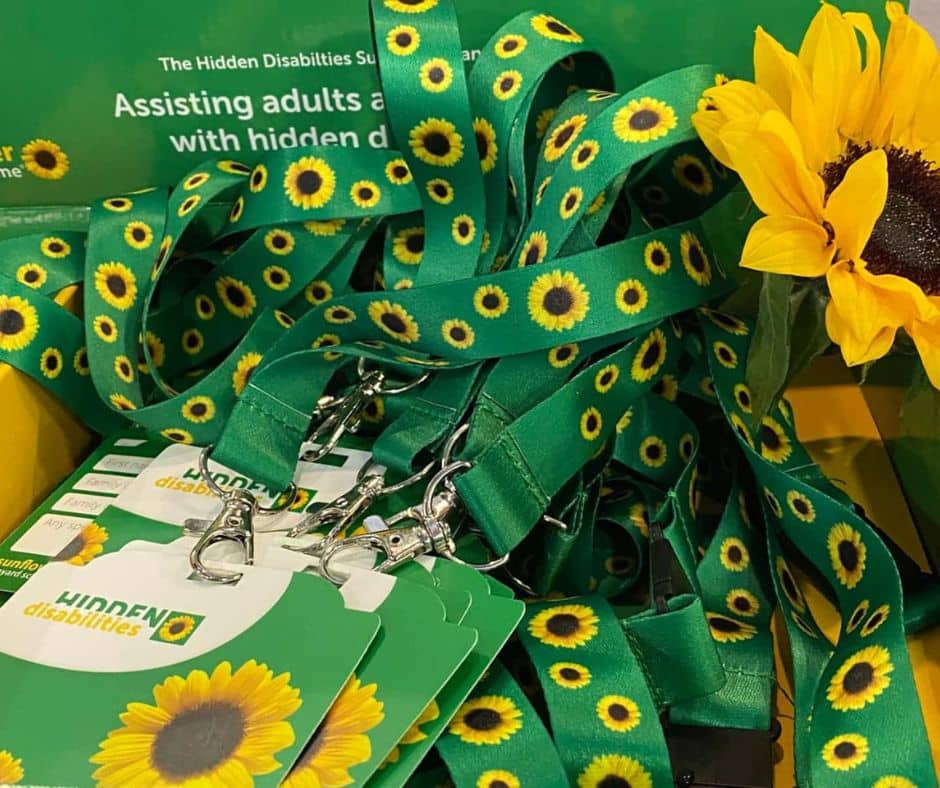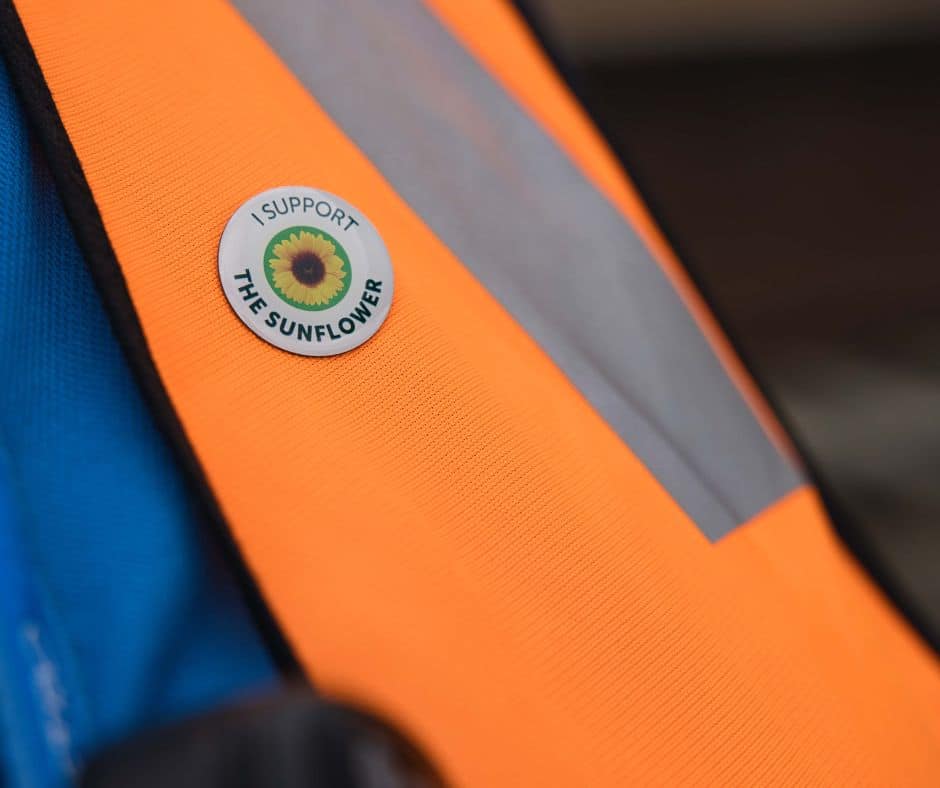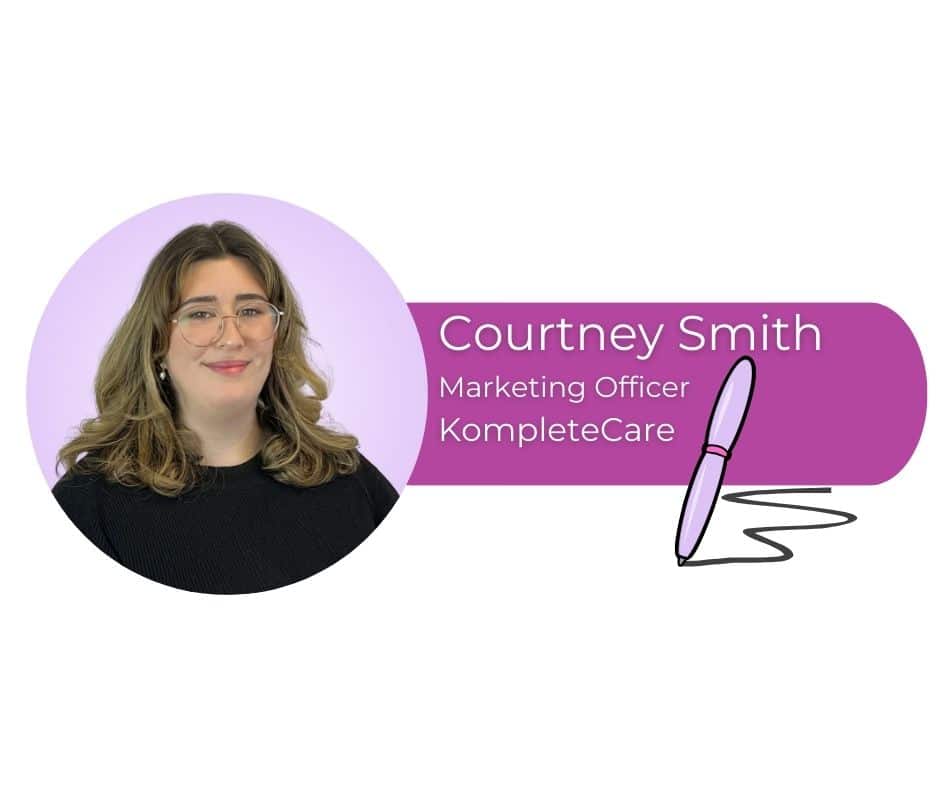Everything you need to know about the Hidden Disabilities Sunflower and how it can help individuals with hidden disabilities and conditions communicate their needs.
I first encountered the Hidden Disabilities Sunflower while working at an expo on behalf of KompleteCare. A young woman I was chatting with was wearing a stunning green lanyard with sunflowers, which caught my attention. She then explained to me why she was wearing it and what it represented, and I was absolutely blown away!
Ever since I’ve seen the Sunflower many times in my everyday life on so many people, and you might have too without even realising it.
What is the Hidden Disabilities Sunflower?
The Hidden Disabilities Sunflower is a simple way for a person to let others know that they have a disability or condition that might not be visible or immediately apparent. It lets others know that you might need additional help, understanding, or more time in shops, work, transport, or public spaces. The sunflower was chosen as it is discreet yet clearly visible from a distance while being joyful and dynamic.
Globally, there are 1 in 7 people living with a disability. While many people experience a disability that is visible, many are living with disability or conditions that may not be visible or a combination of both visible and non-visible conditions. Everyone has the right to participate in everyday life fully, and Hidden Disabilities Sunflower highlights the importance that although some disabilities might not be visible, they’re still very much there. Just because you might not be able to ‘see’ a person’s disability, it doesn’t mean it’s not there. The Hidden Disabilities Sunflower lanyard brings visibility and awareness to what might seem invisible to the naked eye and is a way to share that you have a hidden disability voluntarily.
Who can use the Hidden Disabilities Sunflower?
The Hidden Disabilities Sunflower can be used to represent any non-visible disabilities, conditions, or chronic illnesses. If you have any condition that might not be visible and you’d like to let others know subtly that you might struggle with or need extra time with some tasks and may need assistance. This can range from anything from (and is not limited to) Autism, ADHD, or Dyslexia to Diabetes (Type 1 or 2), Crohn’s Disease, or Epilepsy.
Hidden Disabilities Sunflower has a list of over 900 non-visible disabilities, conditions, and chronic illnesses that the Sunflower may represent. This list is non-exhaustive, and they are adding to it daily, so if you can’t find the disability or condition that you are living with, there is also an option to add it to their list. Regardless of if you can find your disability, anyone with additional access needs is welcome to wear the Sunflower.
How can you wear the Hidden Disabilities Sunflower?
Aside from the traditional Sunflower Lanyard, there are many ways you can wear the Sunflower and share that you have a disability. The Hidden Disabilities Sunflower shop has various options, including pins, keyrings, wristbands, ribbons, and iron-on patches. They also have various products available for Sunflower Supporters, so even if you aren’t living with a disability or condition, you can show your support and let others know that you’re a safe person in a time of need.
What should you do if you see someone wearing the Hidden Disabilities Sunflower?
Invisible disabilities can affect those living with them in several ways. They can be neurological, cognitive, and neurodevelopmental, as well as physical, visual, and auditory (including sensory and processing difficulties). They also include chronic conditions and illnesses, such as asthma and diabetes. The severity of symptoms can fluctuate daily or depending on the situation. People with disability have different needs at different times, so there’s not necessarily one linear way to offer support to a Hidden Disabilities Sunflower-wearer.
You can start by asking the person, ‘Do you need assistance?’ or ‘Do you need some help?’ as a start, and do the following:
- Keep an open mind.
- Be kind and patient.
- Listen, and don’t make assumptions.
- Be respectful.
- Make sure to ask and gain consent before assisting someone.
What support does KompleteCare offer for hidden disabilities?
Here at KompleteCare, our Home Support Workers receive a high level of training to provide in-home and community care for various complex care clients. This includes extensive care training that covers a variety of invisible disabilities and conditions, such as dementia, autism, diabetes, enteral feeding, stoma care, multiple sclerosis, and many more. It also includes those living with mental health conditions, such as depression, anxiety, and PTSD.
KompleteCare offers a range of personalised services tailored to the unique requirements of each individual with access to NDIS, Home Care Package, or private funding. We understand the complexities of navigating funding applications and provide cost-free and obligation-free guidance through the application for government assistance. To learn more about how we can help you, call our office on (08) 8265 5696 or enquire online.


